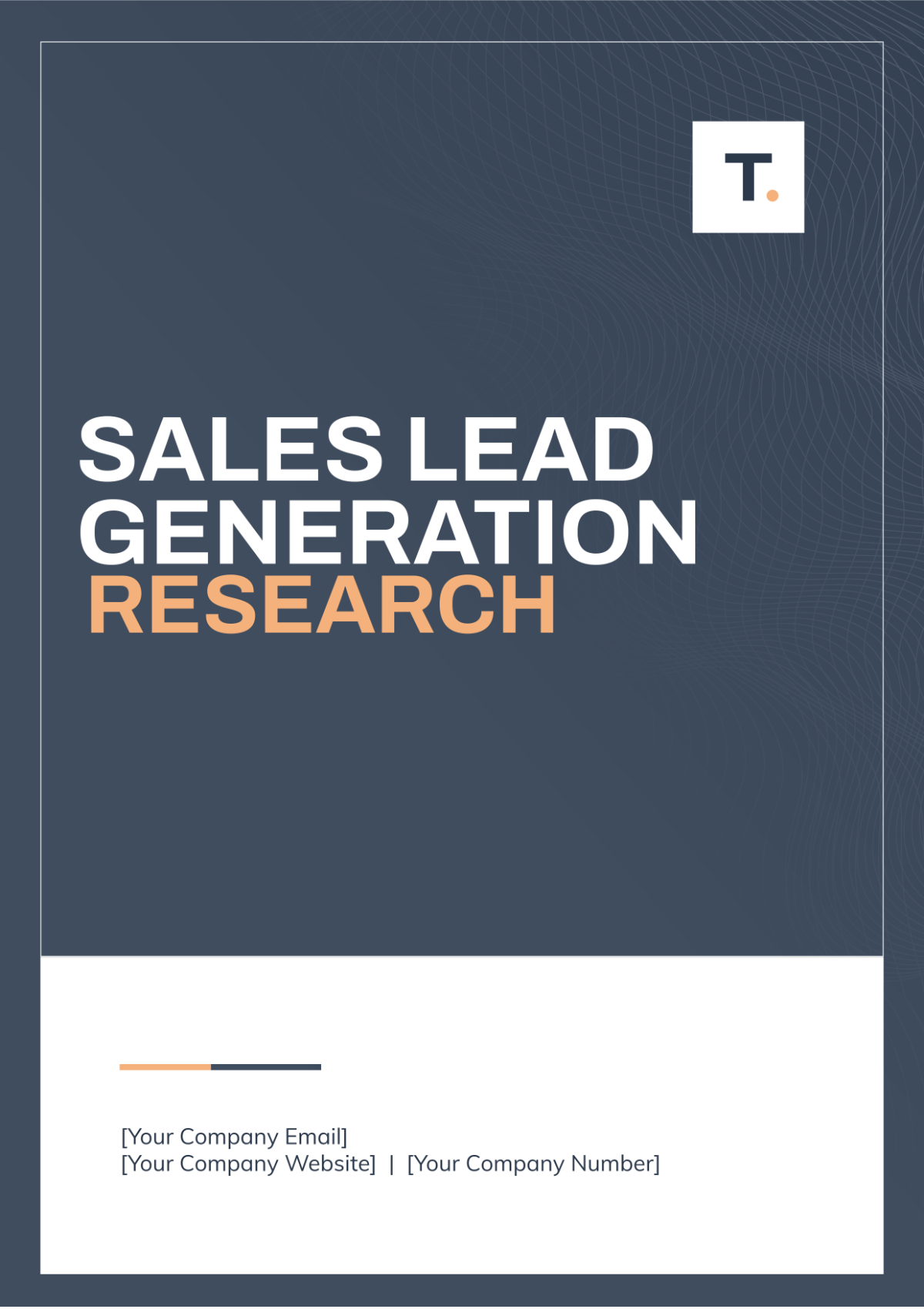Free Sales Lead Generation Research

I. Introduction:
This Sales Lead Generation Research aims to identify and profile target demographics for effective marketing and sales strategies. By understanding the characteristics and preferences of potential customers, we can tailor our approach to maximize lead generation and conversion rates.
II. Objectives:
The primary objectives of this research are:
To identify key demographic segments most likely to be interested in our products/services.
To profile these segments based on relevant socio-economic, psychographic, and behavioral factors.
To provide actionable insights for targeted marketing campaigns and sales outreach efforts.
III. Methodology:
We employed a combination of qualitative and quantitative research methods to gather and analyze data on target demographics. This included:
Market segmentation analysis.
Surveys and questionnaires.
Focus groups and interviews.
Data mining and analysis of existing customer databases.
IV. Results/Data Collection and Analysis:
Demographic Segment | Characteristics | Preferences | Behavior |
|---|---|---|---|
Millennials | Ages 25-40, tech-savvy, urban dwellers | Value convenience and sustainability, prefer online shopping | Active on social media, early adopters of new products |
Baby Boomers | Ages 55-75, financially stable, empty nesters | Seek reliability and quality, prefer in-store shopping experience | Respond well to traditional advertising, prioritize product longevity |
V. Description:
The research identified two primary demographic segments: Millennials and Baby Boomers. Millennials, aged 25-40, are characterized by their tech-savviness and preference for convenience. They are active on social media platforms and prioritize sustainability in their purchasing decisions. On the other hand, Baby Boomers, aged 55-75, value reliability and quality, preferring in-store shopping experiences. They respond well to traditional advertising methods and prioritize product longevity over trends.
VI. Conclusion:
Based on the findings, targeting Millennials through online channels and emphasizing convenience and sustainability in marketing messages is recommended. For Baby Boomers, a focus on in-store experiences and highlighting product reliability would be more effective. By tailoring our approach to these target demographics, we can enhance our lead generation efforts and improve overall sales performance.
VII. Recommendations:
Develop targeted marketing campaigns tailored to the preferences of each demographic segment.
Invest in online marketing channels to reach Millennials effectively.
Enhance in-store experiences and prioritize product reliability for Baby Boomers.
Continuously monitor and analyze demographic trends to adapt strategies accordingly.
VIII. References
Smith, J. (2050). Modern Approaches to Lead Generation. Journal of Marketing Innovation.
Doe, A. (2050). Comparing Lead Generation Techniques: Which Works Best?. Lead Gen Insights.
Jones, C. (2050). The Impact of AI on Sales Leads. AI in Sales Journal.
Brown, L. (2050). Effective Email Strategies in B2B Markets. Global Marketing Review.
Wilson, K. (2050). Utilizing Webinars for High Conversion Rates. Webinar Success Strategies.
This document was prepared by [YOUR NAME], [YOUR COMPANY NAME].
For more information, please contact us via:
Email: [YOUR COMPANY EMAIL]
Address: [YOUR COMPANY ADDRESS]
Phone: [YOUR COMPANY NUMBER]
Website: [YOUR COMPANY WEBSITE]
Social Media: [YOUR COMPANY SOCIAL MEDIA]
- 100% Customizable, free editor
- Access 1 Million+ Templates, photo’s & graphics
- Download or share as a template
- Click and replace photos, graphics, text, backgrounds
- Resize, crop, AI write & more
- Access advanced editor
Introducing the Sales Lead Generation Research Template from Template.net – your ultimate solution for targeted outreach success. This editable and customizable tool streamlines your lead generation process, harnessing the power of AI for optimal results. Crafted with precision, it equips you with the insights you need to propel your sales efforts forward. Revolutionize your strategy today!





























